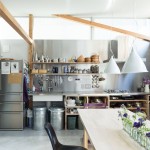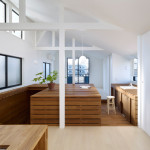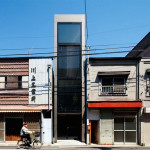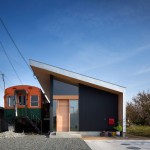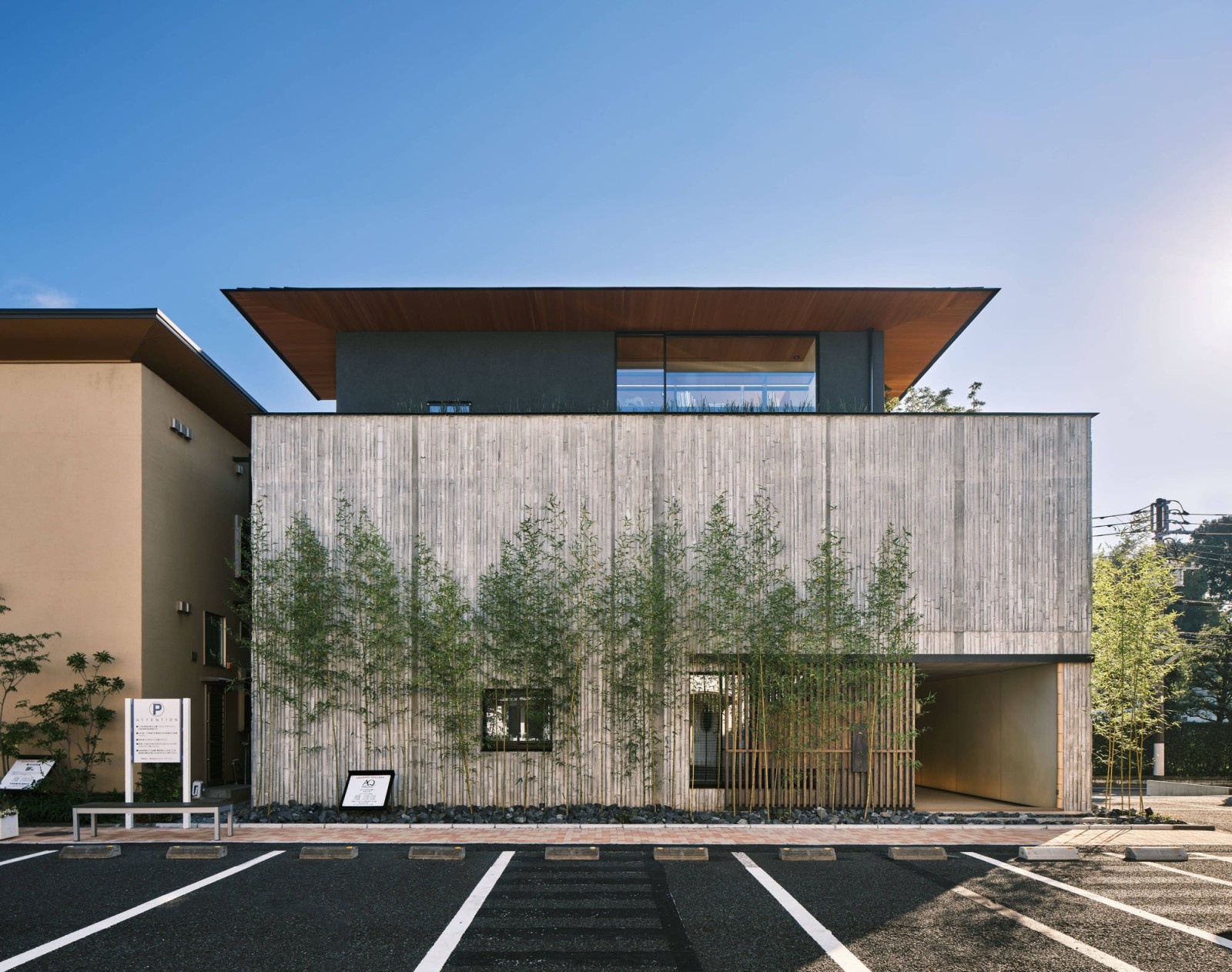
All images © Koji Fujii / TOREAL courtesy Cubo Design Architect
“We believe houses that are rooted in an understanding of Japan’s cultural context and a respect for the skills and innovations of our ancestors, which can nevertheless be passed onto future generations, are the kind of houses we should be building in Japan today,” said Hiroshi Saruta, the lead architect of Cubo Design Architect.
advertisement
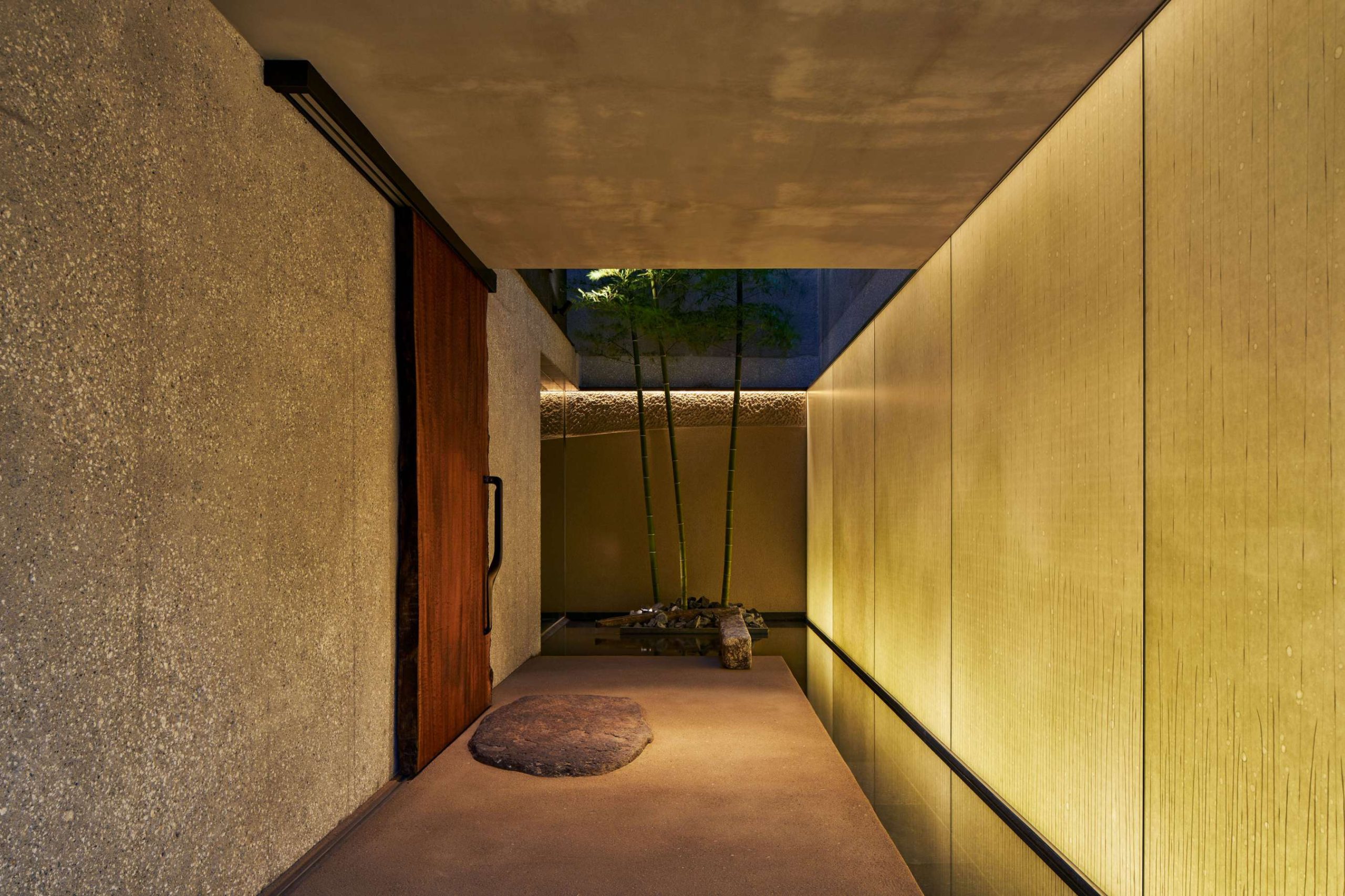
Acting on this very belief, the Cubo Design team brought in a group of seven master artisans to work with them for C4L house. These artisans specialize in sukiya carpentry, plasterwork, screens, washi paper, urushi lacquer, and braiding, and have joined forces to customize details that appreciate “the warmth of things made by hand.”
In the past, dimly lit spaces were the norm in many Japanese households after sunset. The eaves connected the dimly lit interiors with the bright garden exterior, creating a gradient in brightness that shifted one’s gaze from inside to outside. As Junichiro Tanizaki wrote in his seminal work “In Praise of Shadows,” there are materials and furnishings whose beauty and comfort can only be fully appreciated in the half-light of a traditional home. Inspired by this idea, different sections of the house were designed with varying levels of lighting based on the space’s purpose, and they were positioned around gardens, courtyards, and terraces.
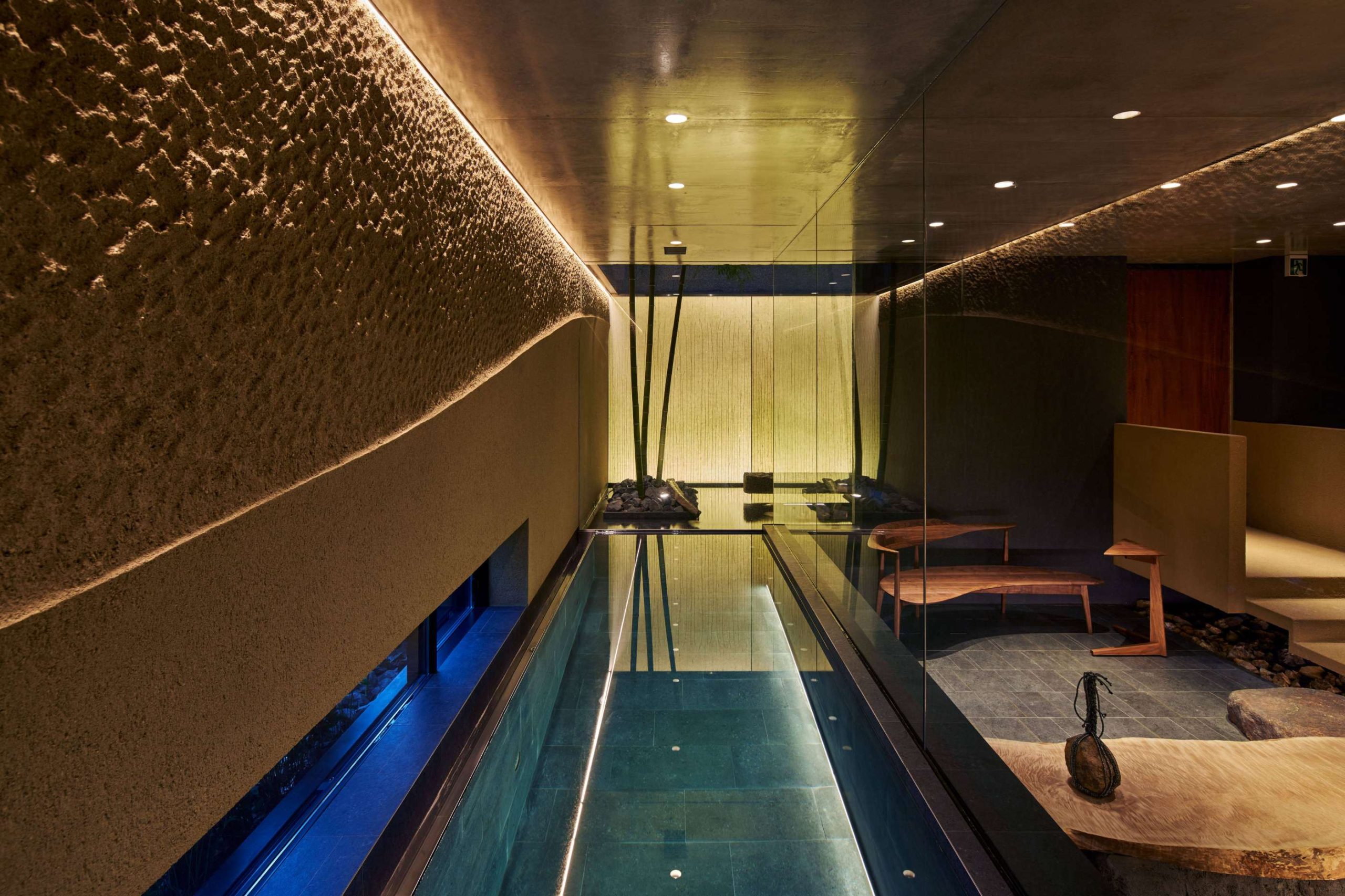
Upon entering, visitors are welcomed by a subtly lit shallow pool with textured plaster wall at one side and clear glass on other. The path features natural and polished stones laid over rocks and plants, resembling an outdoor garden, although leading to an indoor lounge.
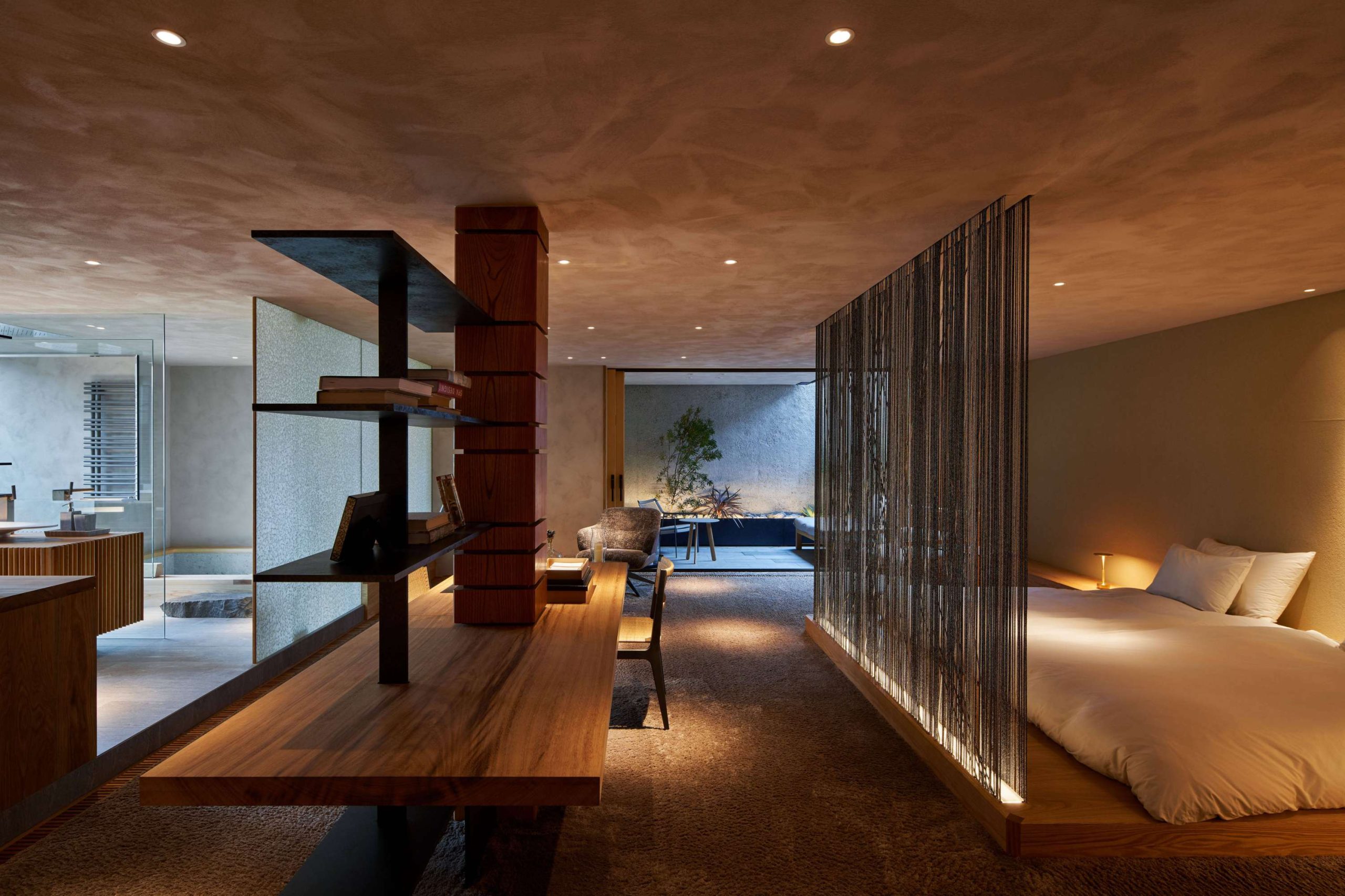
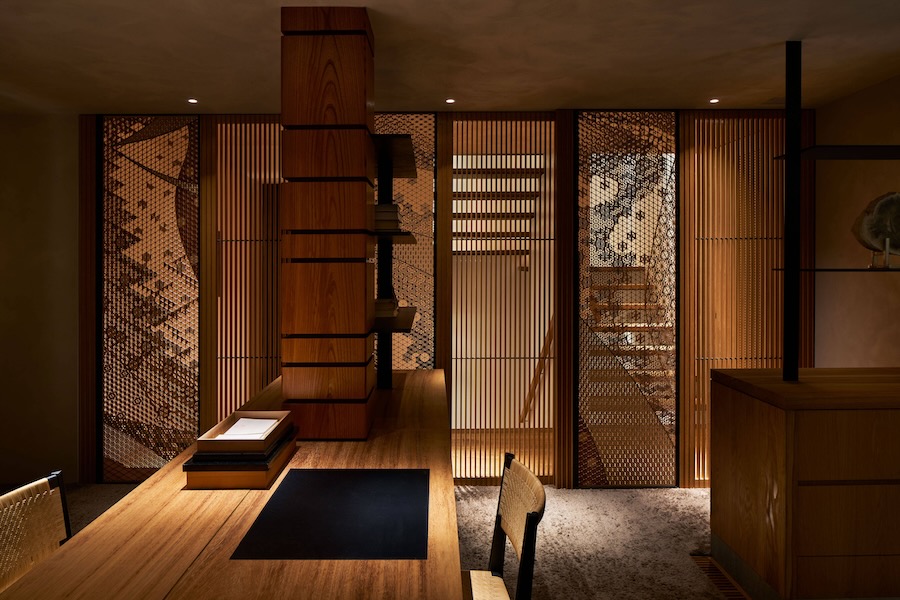
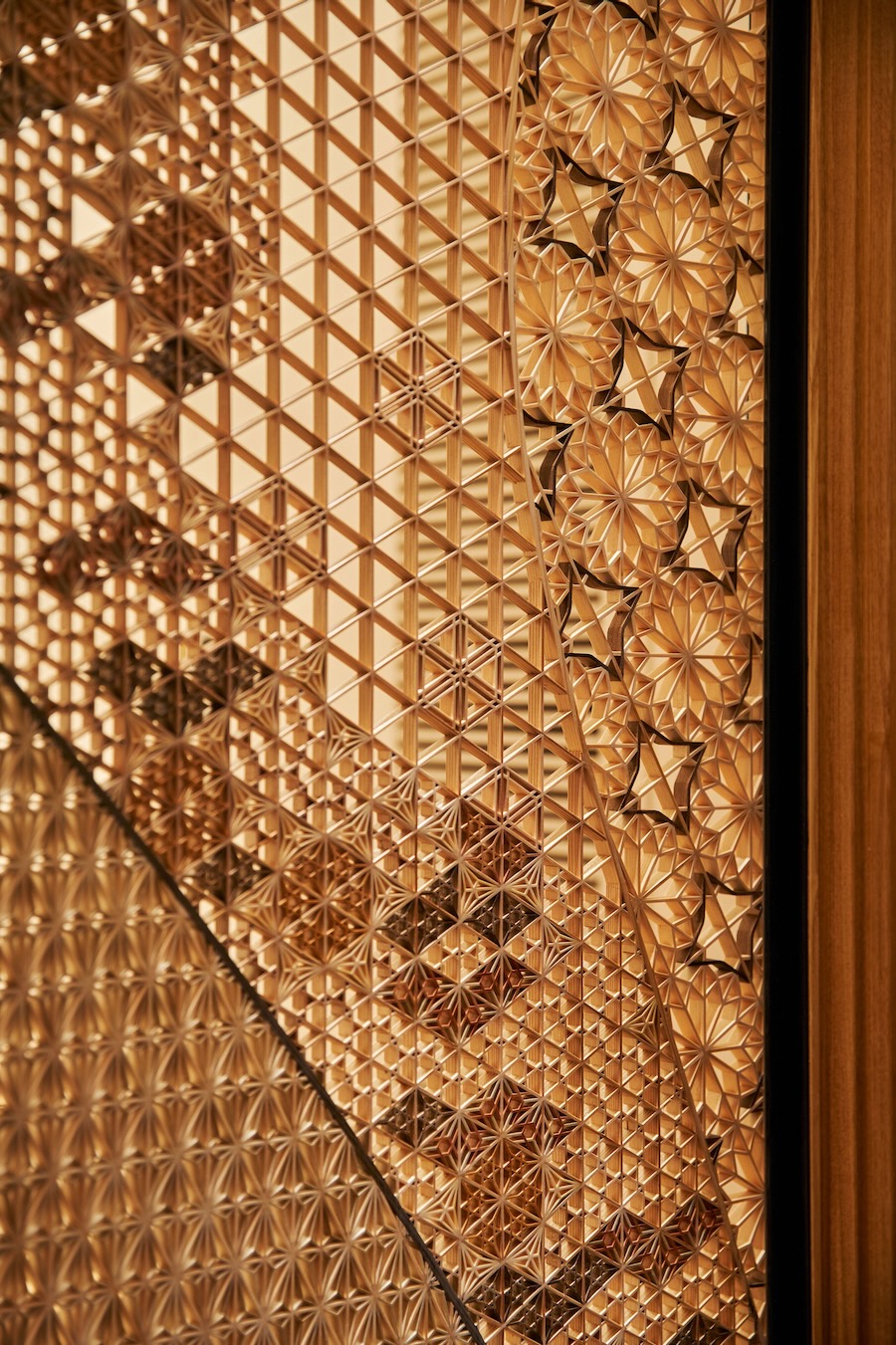
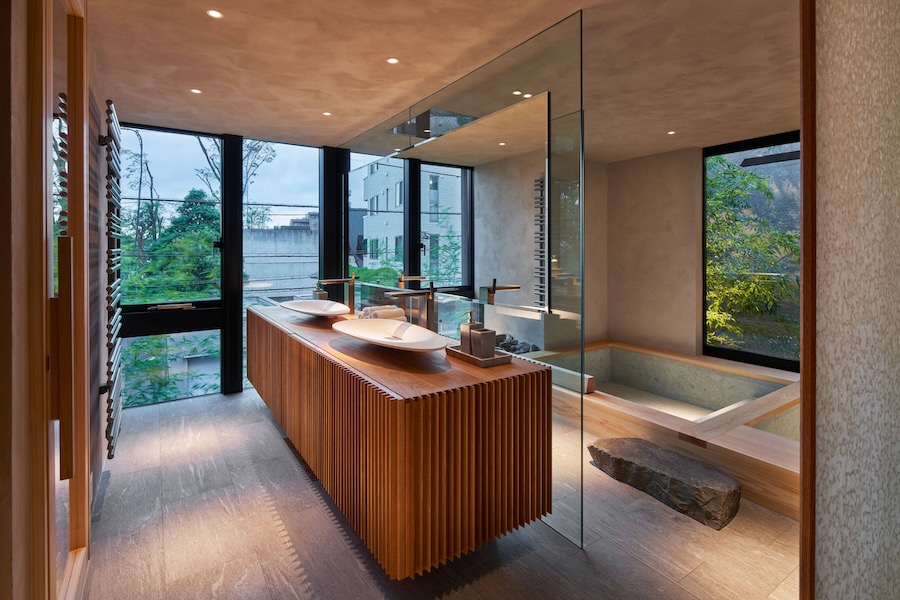
The first floor bedroom showcases a contemporary design, with a dim sleeping area screened by braided cords for privacy. The hallway and bedroom are separated by exquisitely crafted kumiko woodwork. The bathroom area boasts a sunken stone bath and a curved timber sauna.
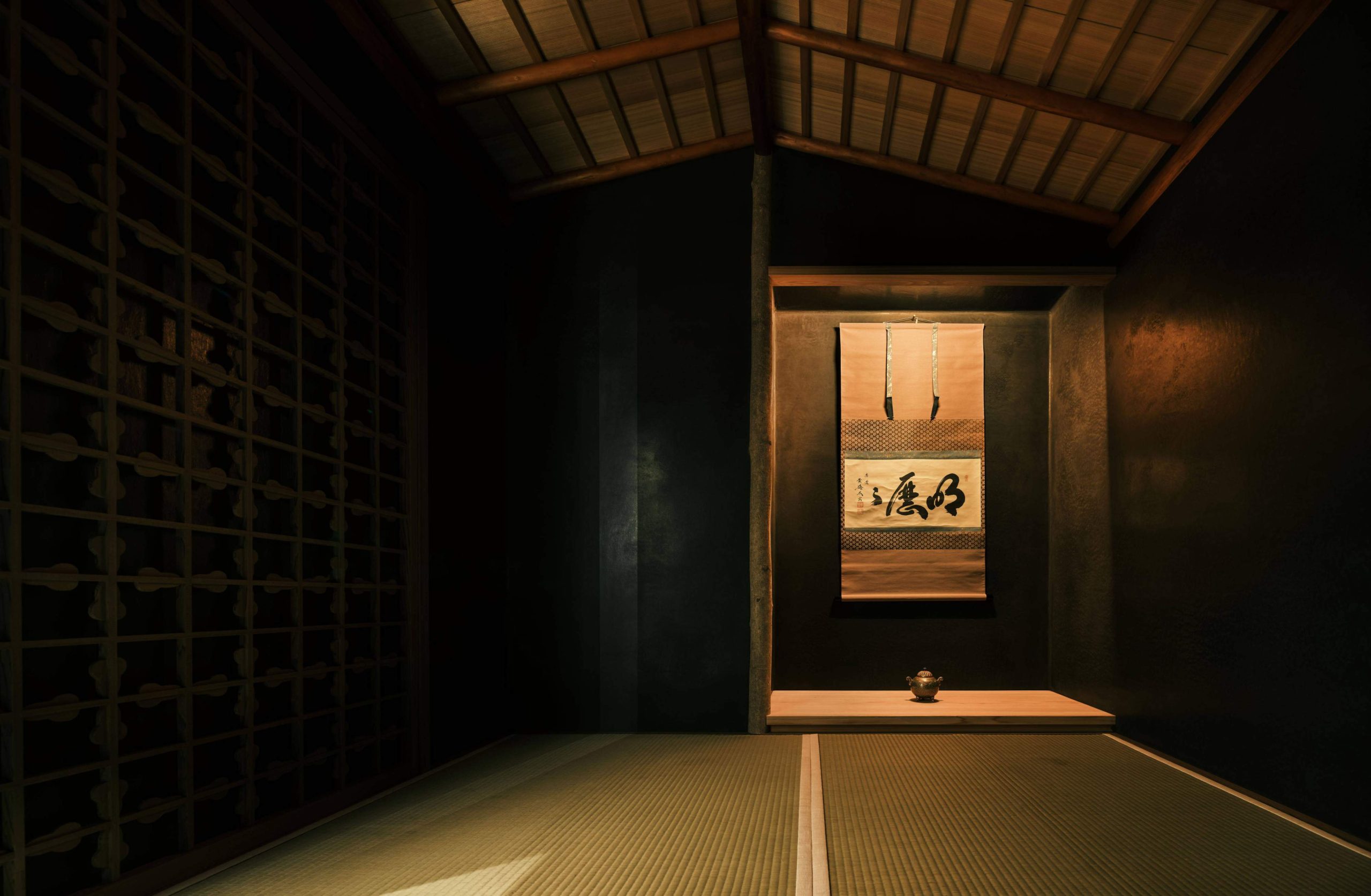
The tearoom embodies traditional Japanese carpentry techniques and also features tatami flooring. Small balcony areas overlook the ground-floor lounge, offering a visual juxtaposition between rough and smooth, light and dark.
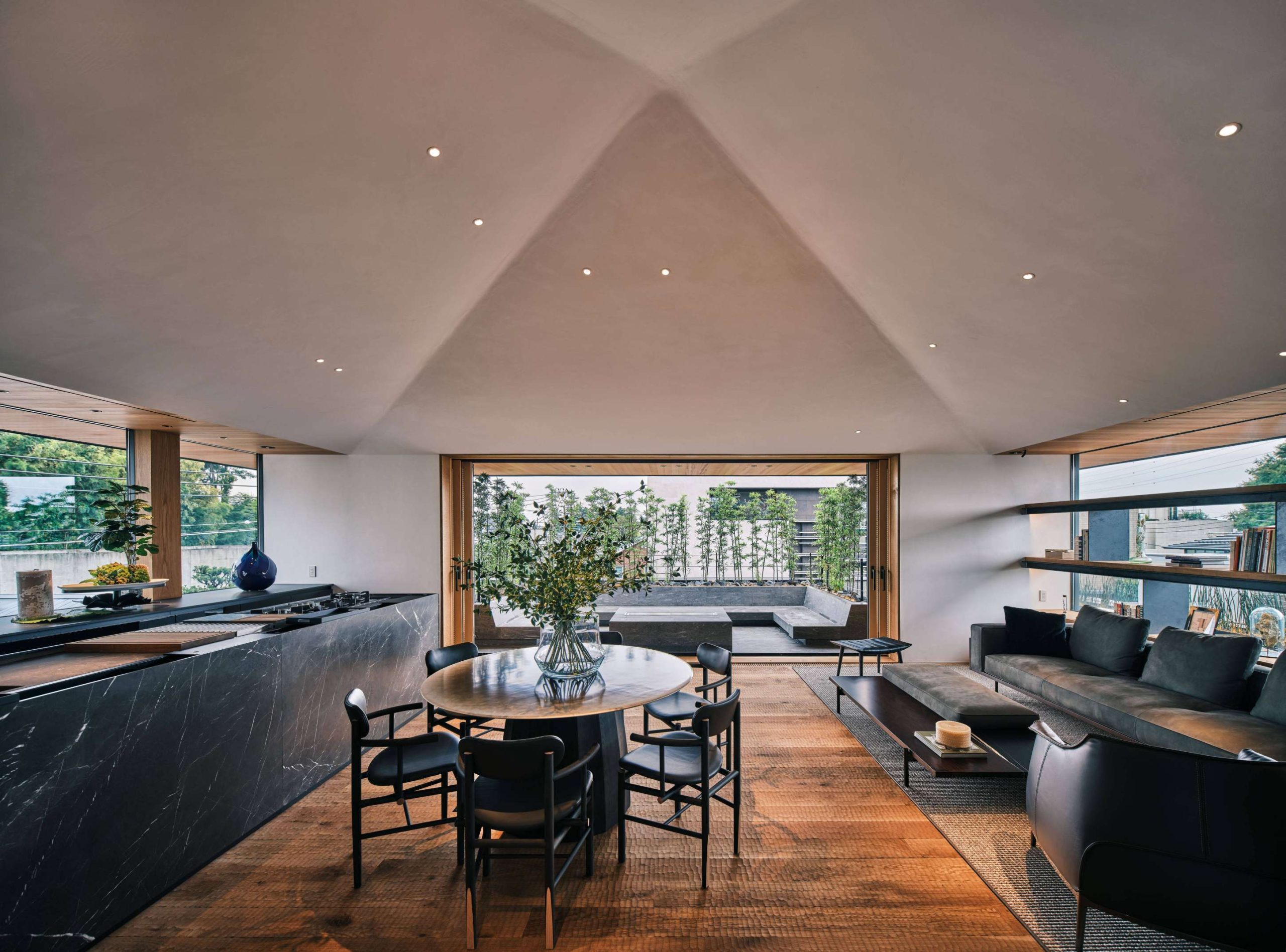
The second floor, or top floor, comprises a living, dining, and kitchen area, along with a south-facing terrace. The terrace is sheltered by a large, wood-lined thin overhang of the roof.
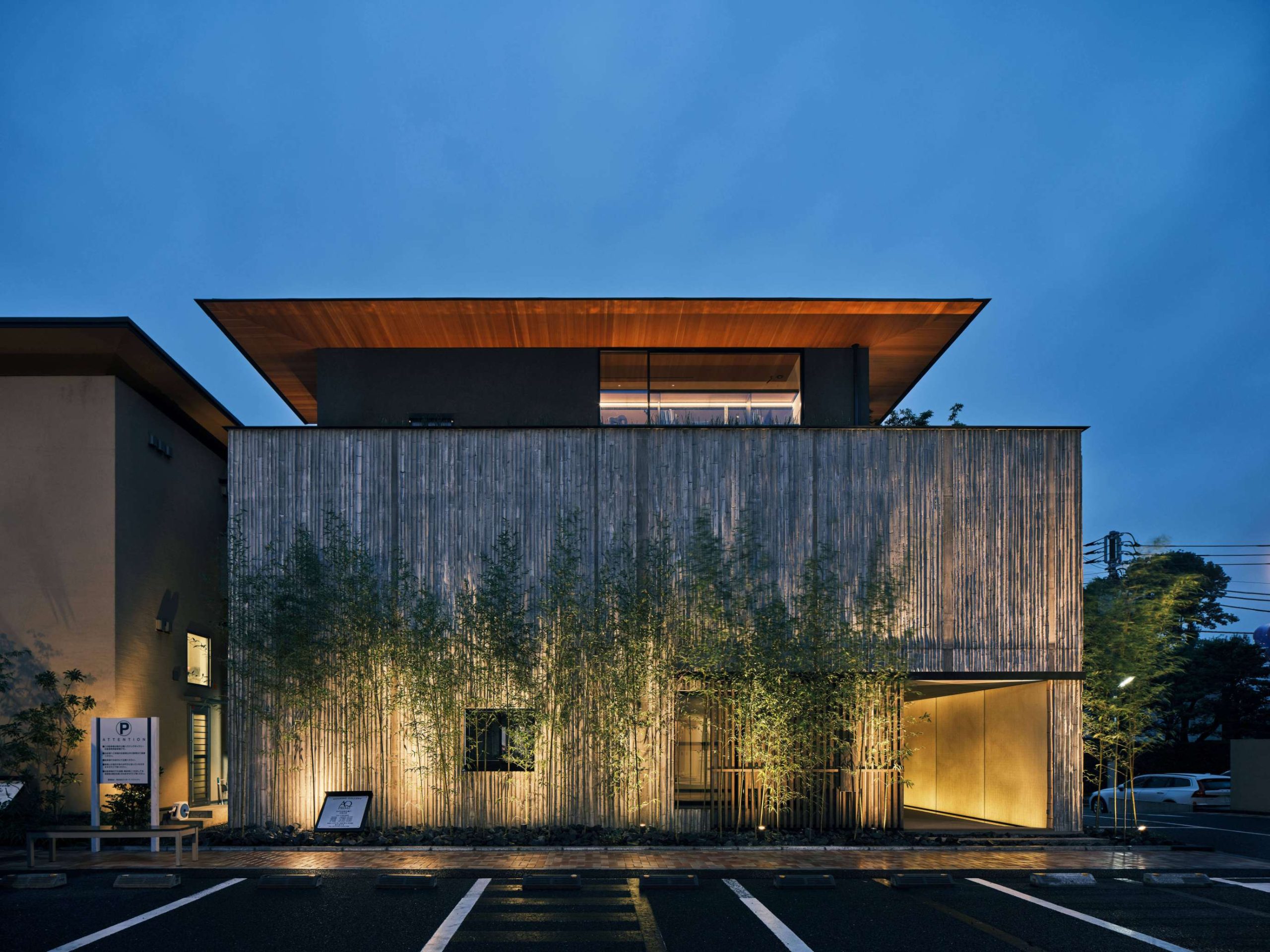
The home reflects the peacefulness and delicate balance that defines Japanese culture, while also capturing the beauty of imperfection known as wabi-sabi. Each space harmoniously combines modern and traditional elements, creating a captivating yet rooted experience.
COLLABORATORS
Kumiko Woodworking: Eiichi Yokota
Sukiya Tea Room: Hirochika Sugimoto
Washi Paper: Eriko Horiki
Plasterwork: Naoki Kusumi
Woodwork: Yoshihiro Wada
Kumihiro Braids: Takashi Fukuda, Ryuta Fukuda
Urushi Lacquer (Wajima): Haruo Ichimatsu, Satoshi Ichimatsu


